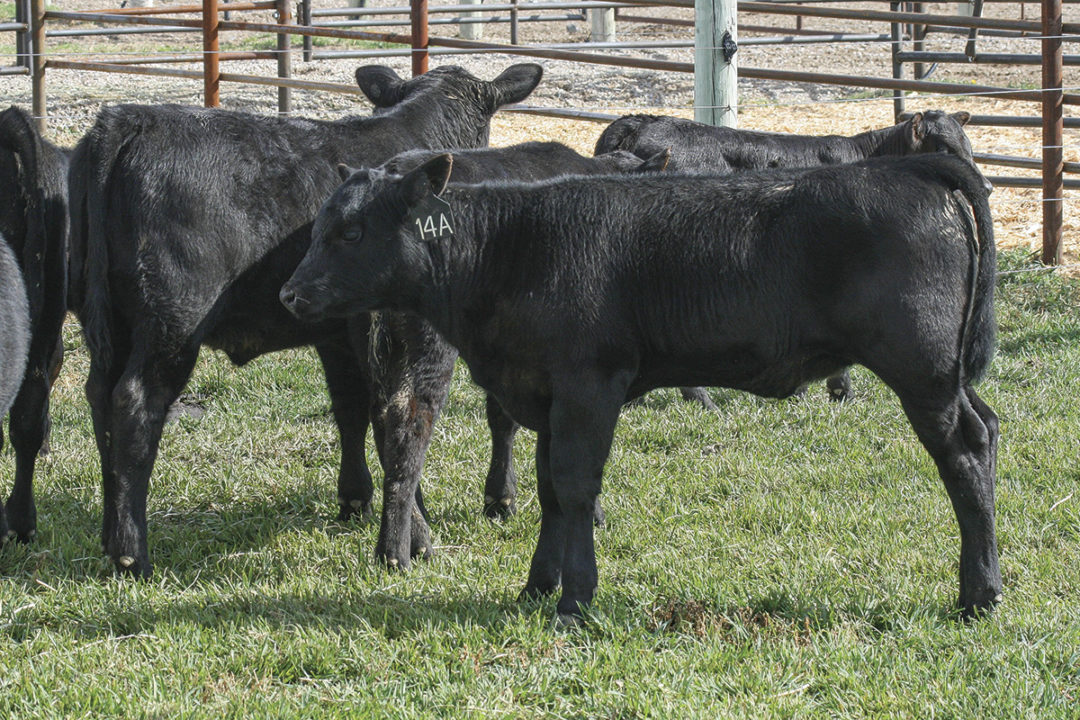It’s no secret black-hided cattle have topped the market in price for many years. While there are no exact answers, it is an interesting topic to discuss. Why do black-hided cattle bring more at sale? And what can producers do about it?
When we talk about hide color, in general, we are talking about black-hided cattle to be Angus-influenced cattle, says Chris Hitch, president and co-CEO of Hitch Enterprises Inc., a feedyard in Guymon, Oklahoma.
The higher prices black-hided cattle receive is because there are premiums associated with those cattle. Premiums come from consumers, says Dr. Elliott Dennis, University of Nebraska – Lincoln livestock marketing and risk management assistant professor.
“We know there are different premiums for different hide colors,” Dennis says. Some of that is driven from consumers and the marketing of those different breed associations, he adds.
In programs such as Certified Angus Beef, there are significant premiums because the breed organization has done a great job of differentiating its products to consumers, Dennis says.
“The cattle industry today reflects the really tremendously successful efforts of the Angus breed, in particular, to market their breed of cattle to consumers,” says Dr. Derrell Peel, Oklahoma State University Extension livestock marketing specialist.
Consumers have shown they're willing to pay more for that type of product. The premium is passed down to producers from consumers in the form of additional premiums on dollars per hundredweight on a carcass-level basis.
However, when consumers are purchasing their meat, they cannot tell what color the animal was. They won’t know the difference between a black-hided or color-hided animal, Dennis says. This means consumers are really looking for quality. They may also be looking for things like all-natural or organically raised.
“Consumers have placed a premium on those because of certain marketing efforts,” Dennis says. “What they really have is a preference for the attributes which tends to express in those cattle, such as flavor, tenderness.”
Buyers purchasing cattle
There are a number of other factors which go into purchasing cattle. For the feedlot specifically, buyers are looking for specific phenotypic characteristics in the cattle they buy. When a buyer is reviewing cattle, they can see their size and are making judgments about age, weight, fleshing and overall condition. Typically, they don’t have access to other information like the way the cattle were managed and their genetics.
“I think most people would agree with the fact that hide color probably carries more weight than it really should,” Peel says. “But in the speed of commerce in an auction-type setting, hide color becomes a somewhat overweighted characteristic relative to what we're really looking for.”
In an auction setting, cattle are sold rapidly and buyers don't have a lot of time or information to go on. Hide color is used by buyers as an indicator of cattle quality because it's a very obvious factor, Peel says.
“It's not a perfect indicator, and I think any cattle buyer will tell you that,” Peel says. “But it is one of the more obvious things and is like a first-level screening. Some buyers are looking for specific breed attributes or breeds where they're using color to try to get to that. But in other cases, it's not so much breed-specific as it is just general quality factors.”
In the future, we may have the ability to access each animal’s genetic information instead of using hide color as an indicator of how they will do in the feedlot. This would limit premiums associated with hide color and put them strictly on the quality of meat the animal will produce, Peel says.
“Similar to what is available in the purebred world with EPDs, other measures will be available to producers and cattle buyers to get a look at what each specific animal is,” Peel says. “I'm not a futurist, but I can see that they are coming as technology continues to progress. There will be an option to get fairly detailed genetic information conveyed to the buyers in the midst of a sale.”
What can producers do?
Producers are constantly looking for ways to improve the value on cattle they produce, Dennis says. There are many attributes feedlots and processing facilities are willing to pay for.
“Sometimes there's a tendency in the industry to equate premiums received in the terms of higher-quality animals, and that's not necessarily the case,” Dennis says. “Ultimately, producers can make money two ways: by improved efficiencies, which may or may not be proxied by breeds, or hide color.”
Additional value for the carcasses can be gained by developing other attributes. One of these attributes is all-natural-raised cattle. Additionally, if cattle have export potential, it will increase the value.
“Producers should try to differentiate themselves by finding ways to be certified in certain programs or produce additional value in a system that works for you,” Dennis says.
There is a recognition among producers that non-black cattle embrace high quality in many instances, Peel says. Research studies continue to show hide color as a value characteristic in cattle, but not a quality characteristic.
It all comes down to what the buyer wants and knowing what the goals of your business are. The cattle industry has many factors to consider when it comes to marketing beef. But what it really boils down to is what your consumer wants. Producers must do what works for them.











